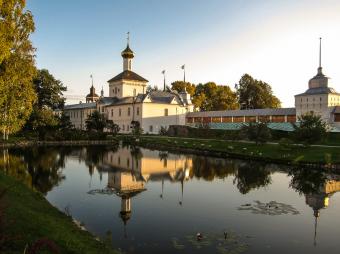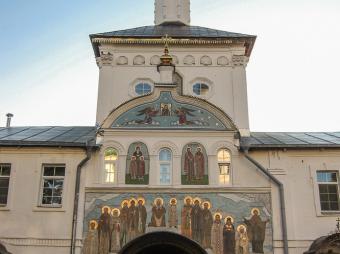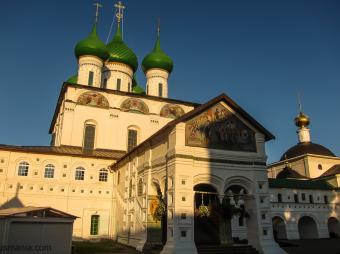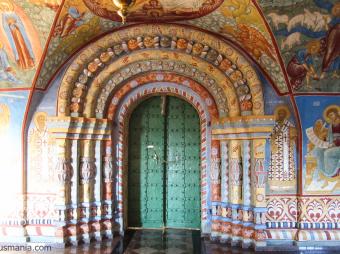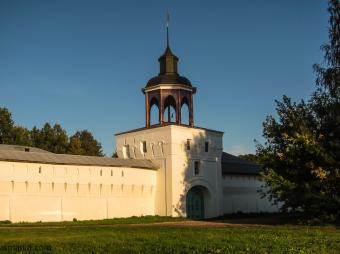Tolga
Svyato-Vvedensky Tolgsky Convent
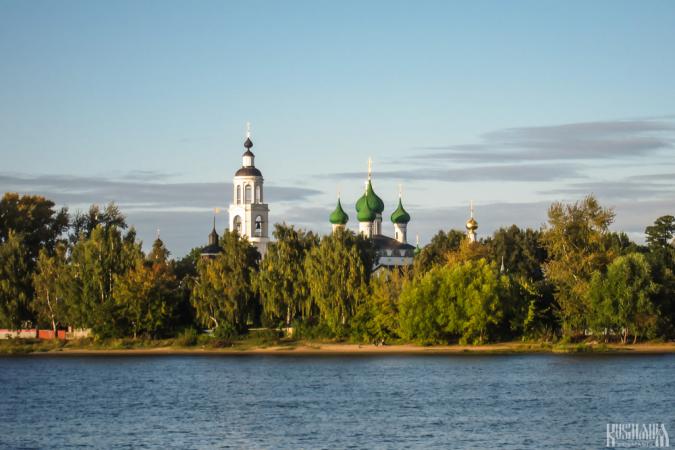
In 1314 Bishop Propkhor (also known as Trifon) of Rostov founded the Tolgsky Monastery on the banks of the River Volga in the village of Tolga which has since been incorporated into Yaroslavl. It was founded on the site where an icon of the Virgin Mary and the infant Christ miraculously appeared. This icon is now known as the Our Lady of Tolga Icon and was said to be wonder-working. The monastery received many donations from people who claimed to have been healed by the icon, including Tsar Ivan the Terrible who visited the monastery in 1553 and was said to be cured of his leg pains. During the Time of Troubles much of the monastery was burned to the ground and many of the monks were killed, these monks were later buried in the monastery's grounds.
Throughout its history the imperial family continued to visit the monastery and make generous donations to it. In 1913 Tsar Nicholas II and his family visited the monastery as part of the 300th anniversary of Romanov rule. Shortly afterwards the Revolution occurred and the monastery was closed in 1917. All services were completely stopped at the monastery in 1928. During the Soviet era the former monastery was used as a children's colony and its buildings were left in ruins. In 1987 it was reopened, but as a convent rather than a monastery, and underwent large-scale reconstruction work. In 2003 the Our Lady of Tolga Icon was returned to the convent and has since became the largest convent in Russia and a popular place of pilgrimage in Russia.
Holy Gates and St Nicholas' Gate-Church
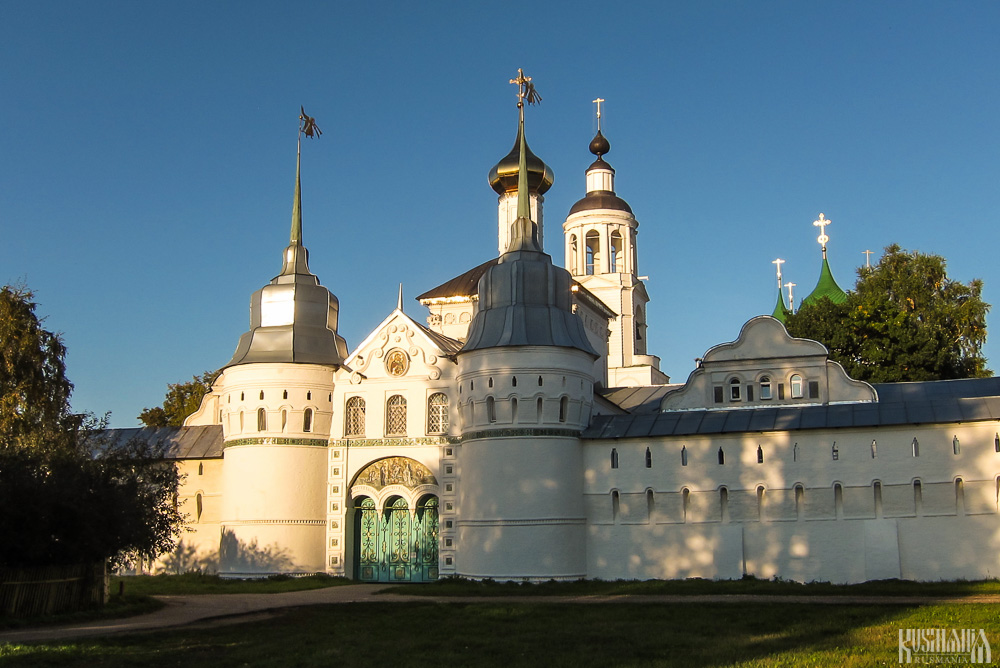
When arriving at the convent via ferry along the Volga, the most striking feature is the Holy Gates and St Nicholas' Gate-Church built over them. The complex was built in 1672 and is influenced by the gate-churches built during the building programme of Metropolitan Jonah (Iona) Sysoevich of Yaroslavl and Rostov. On the outside the Holy Gates are flanked by towers and on the inside the church's building is topped by a single dome and decorated with paintings of saints. Also attached to the church is the abbot's chambers which date from the same period.
Presentation of Virgin Mary Cathedral
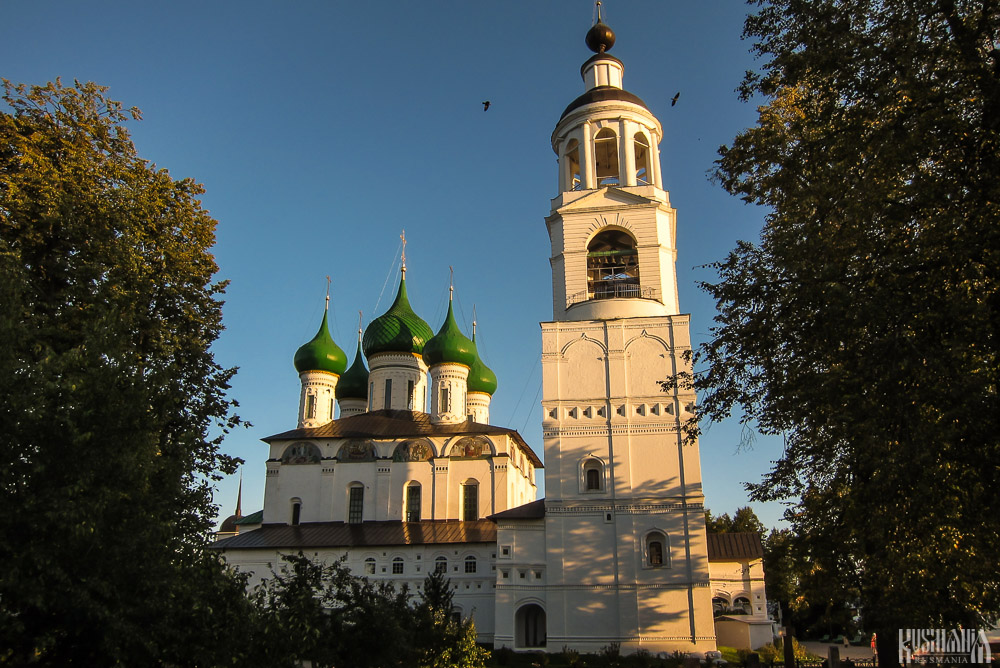
The convent's main place of worship is the Presentation of Virgin Mary Cathedral which was built between 1681 and 1683. It comprises a four-pillar building topped with five green domes and surrounded by a tour-tier parvis. In the 1680s a three-tier bell tower was built onto the north-western corner of the cathedral and to this a further two tiers were added in 1826 in the classical style. Between 1690 and 1691 the interior was decorated with frescos, fragments of which have survived. The cathedral was closed in 1928 and subsequently used as a laboratory and a store. It was re-consecrated in 1992 and restoration work was carried out.
Exaltation of the Cross Church
The Exaltation of the Cross Church was built in the 1620s on the orders of Tsar Michael and comprises a single domed cube building. A refectory was built onto it in the 1670s. The church was subsequently remodelled between 1837 and 1838 in the classical style. In 1928 the church was closed and was used as a cinema before it was completely abandoned. It was restored in the 1990s and re-consecrated in 1999. Since 2003 the church has held the Our Lady of Tolga Icon, the monastery's most sacred relic.
Miracle-Image of the Saviour Church
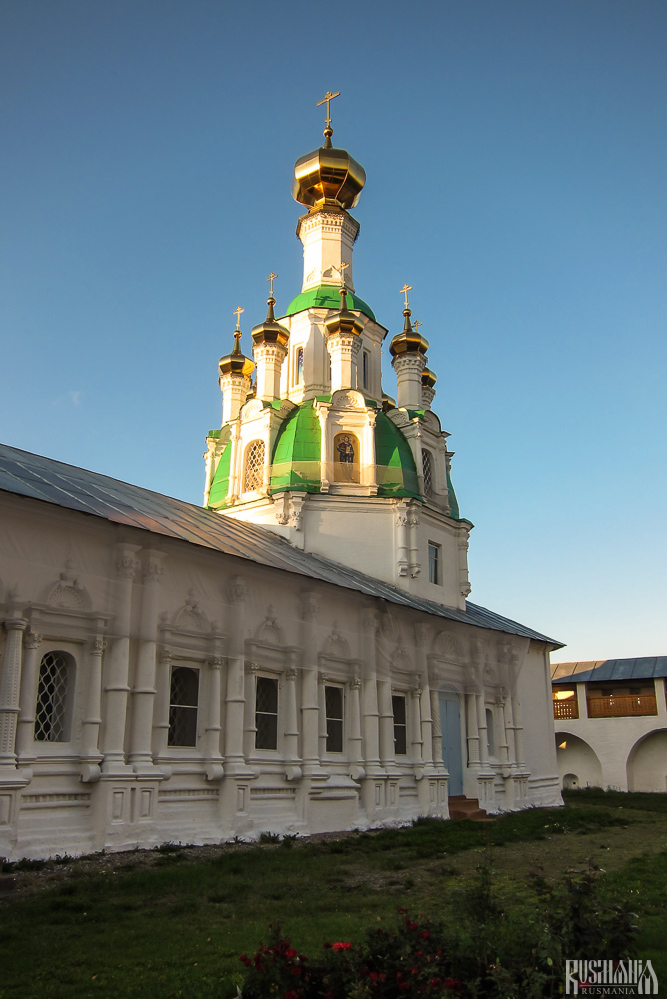
In the northern corner of the monastery, built into the monastery's hospital ward, is the Miracle-Image of the Saviour Church. It was built in the 1710s and is an excellent example of the Moscow baroque architectural style. It comprises a green octagonal dome with eight small golden domes on its base and one larger golden dome standing on the top of a tall tholobate.
| Location | Tolga, Yaroslavl |
|---|---|
| Website | http://www.wix.com/tolgskymon/ru |

 History
History